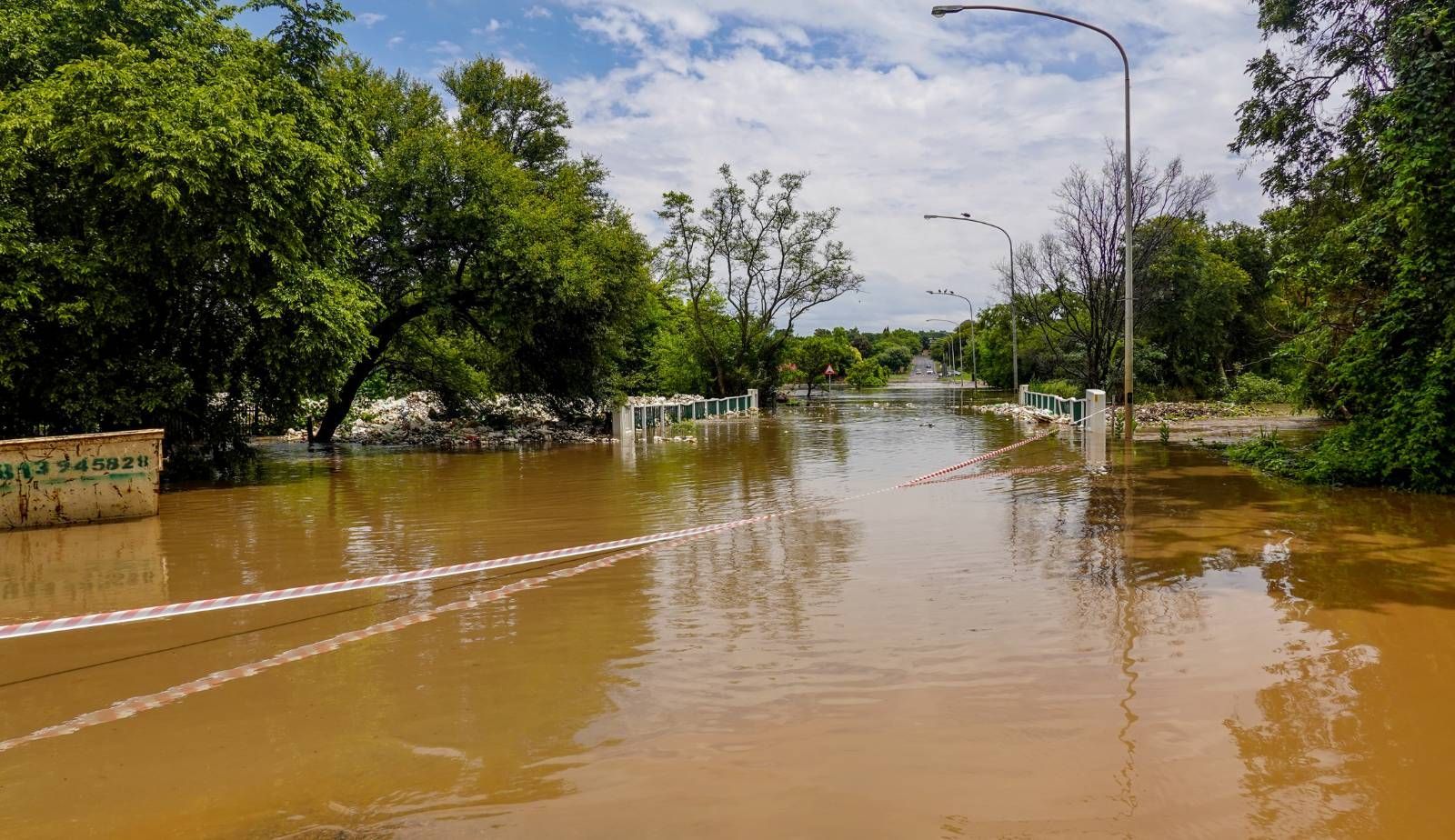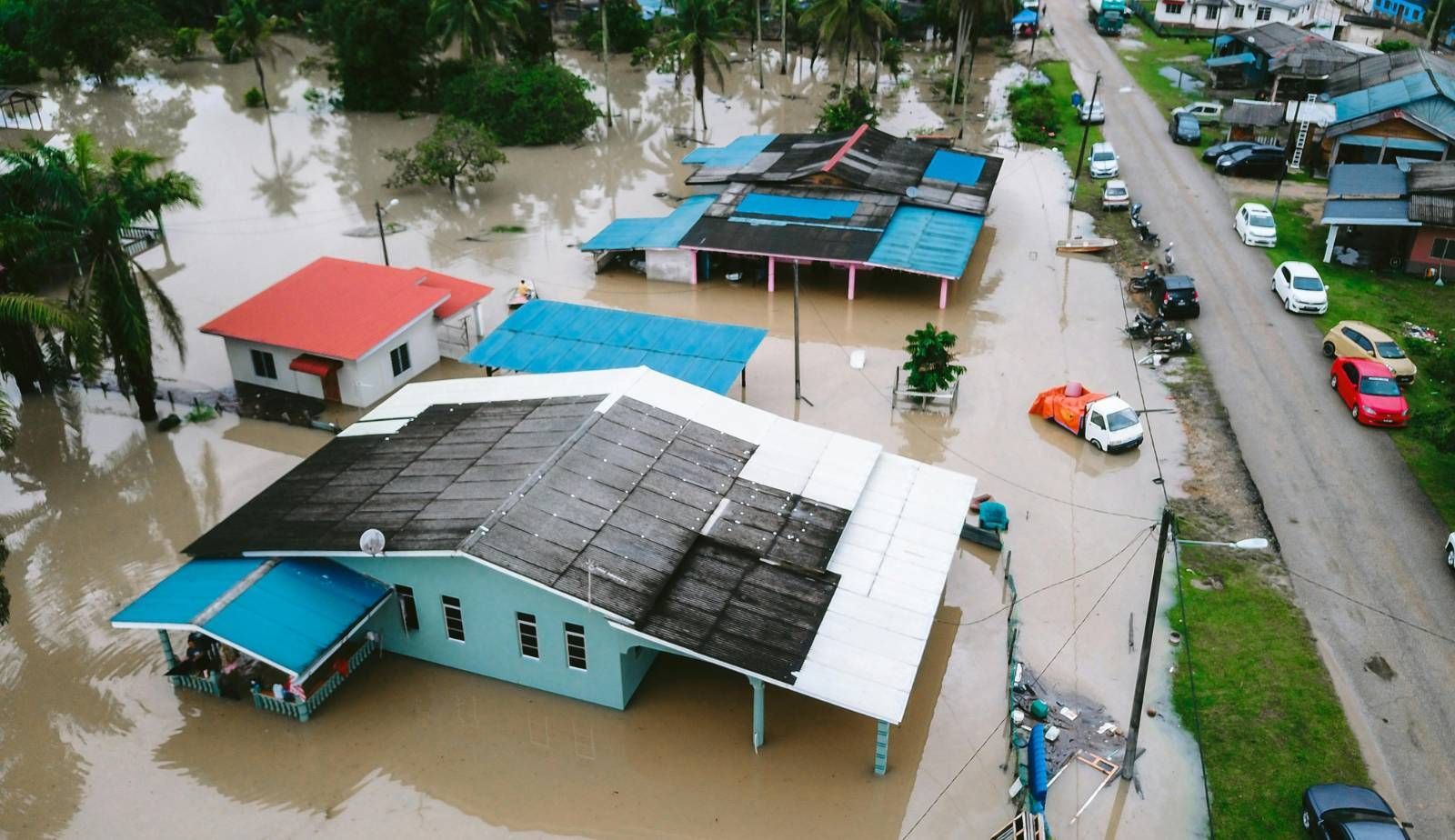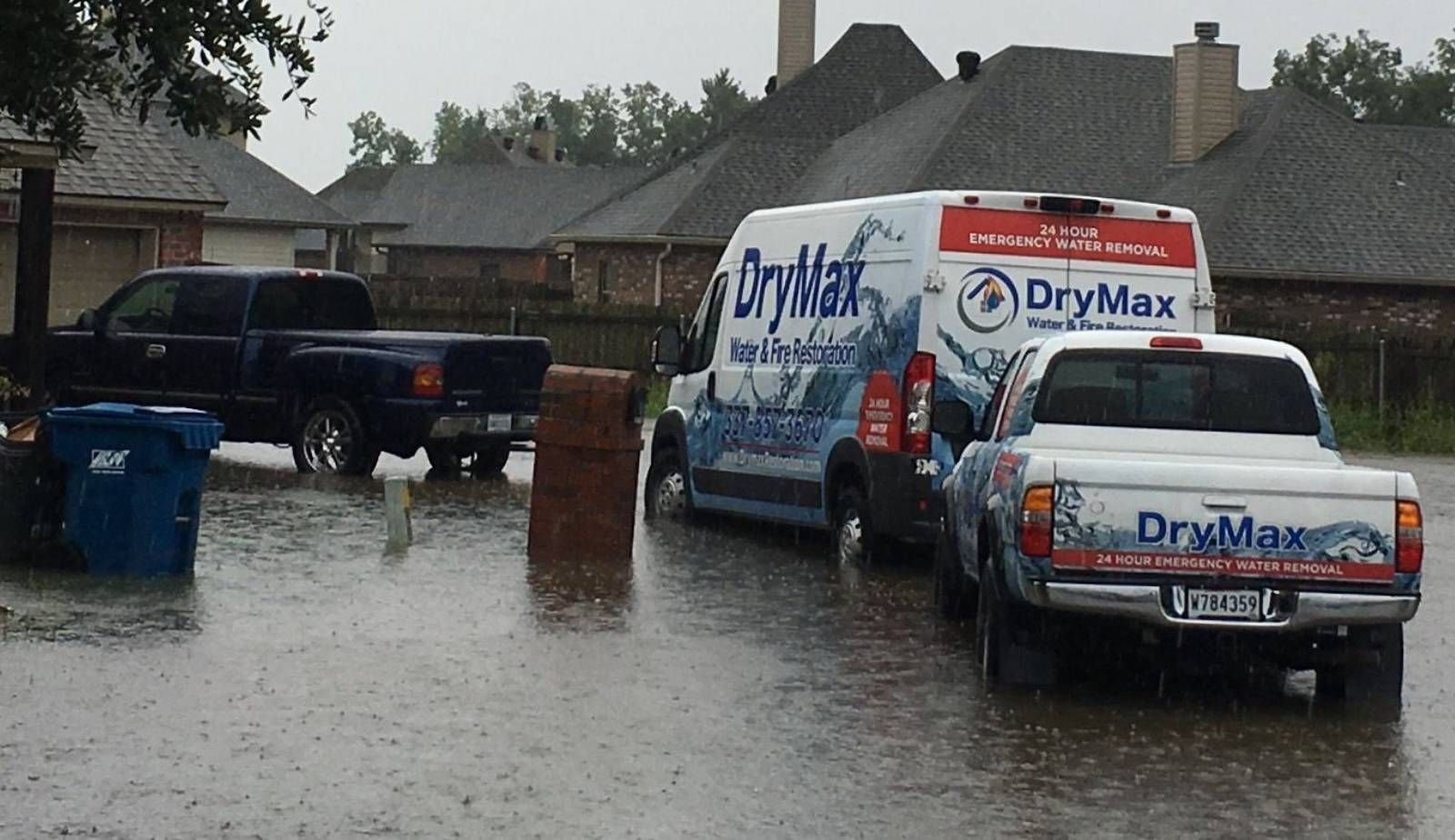Why Louisiana Homes Are More Prone to Water Damage: Understanding Geographic, Climate, and Structural Risks and Solutions
Louisiana's unique geographic and climatic conditions make homes in the state particularly vulnerable to water damage. The combination of high humidity, heavy rainfall, and the risk of flooding creates an environment where water-related issues can escalate quickly. Understanding these factors is key to preventing costly damage and maintaining a safe living environment.
The state's soft, saturated soils contribute to structural issues as well. Homes in areas prone to sinking must contend with uneven settling, which can exacerbate potential water intrusion. In addition, Louisiana's aging infrastructure may not adequately support modern residential needs, making proactive measures all the more crucial for homeowners.
Being aware of these challenges empowers individuals to take necessary precautions. By implementing effective waterproofing solutions and knowing how to respond to water damage, residents can safeguard their homes against the persistent threat of water-related issues.
Geographic Factors Making Louisiana Homes Vulnerable
Louisiana's unique geography contributes significantly to its susceptibility to water damage. The interaction between low-lying landscapes, proximity to bodies of water, and specific soil characteristics creates environments that heighten flood risks for homeowners.
Low-Lying Topography
Much of coastal Louisiana is characterized by low-lying topography. Areas often sit just a few feet above sea level. This elevation makes them particularly susceptible to flooding during heavy rainfall and storm surges.
In these regions, water easily accumulates, leading to prolonged standing water, which can damage homes. Louisiana homeowners need to be aware of how local topography affects drainage and flood management.
Proximity to Waterways and Coastlines
The proximity to numerous rivers, bayous, and Gulf coastlines intensifies the flood risk. Louisiana is crisscrossed by bodies of water that can overflow during heavy rains or hurricanes.
With the Gulf of Mexico nearby, storm surges can lead to significant water intrusion in homes. This situation is compounded by climate change, which increases the frequency of extreme weather events, further endangering local properties.
Sediment Deposits and Soil Conditions
Sediment deposits in Louisiana are complex and often problematic. The state's alluvial plains can hold water due to their clay-rich soils. This saturation leads to limited drainage capacity.
Additionally, frequent flooding can erode natural landscapes, altering their ability to absorb water. Homeowners should understand the implications of these soil conditions when considering their properties' vulnerability and how to implement effective mitigation measures.
Climate and Weather Patterns Increasing Water Damage Risk
Louisiana's unique climate and weather patterns significantly contribute to its vulnerability to water damage. The combination of heavy rainfall, the impacts of hurricane season, and storm surges creates a hazardous environment for homes.
Heavy Rainfall and Flooding
Louisiana experiences intense and frequent rainfall, particularly during the spring and summer months. The state averages over 60 inches of rain per year, significantly increasing the risk of flooding.
Heavy rainfall can lead to rapid water accumulation, overwhelming drainage systems. Many areas are prone to flash flooding, which can rise and recede quickly but causes extensive damage in a short period.
Residents should consider installing sump pumps and flood barriers to mitigate water damage. Regular maintenance of gutters and downspouts will help channels direct water away from the foundation.
Impacts of Hurricane Season
Hurricane season, which runs from June to November, poses a severe threat to Louisiana homes. The Gulf of Mexico’s warm waters can fuel storms, leading to heavy rainfall and strong winds.
Hurricanes often bring extended periods of rain, leading to significant flooding even in areas not directly impacted by the storm. Those living near coastal regions face a heightened risk due to their proximity to hurricane paths.
Homeowners should invest in storm shutters and ensure their homes are up to code for wind resistance. Preparing an emergency kit and an evacuation plan is also prudent for families living in vulnerable areas.
Storm Surge Events
Storm surge is an often-overlooked aspect of water damage risk associated with hurricanes. As hurricanes move inland, they can push seawater onto land, inundating homes and infrastructure.
In Louisiana, areas like New Orleans are especially at risk due to their low elevation. Storm surges can lead to devastating flooding, often exacerbated by other weather conditions.
It is crucial for residents to understand their flood zone and stay informed about storm surge forecasts. Investing in elevated foundations and flood-resistant landscaping can provide additional protection against potential water damage.
Structural Issues in Louisiana Homes
Louisiana's unique geographic and climatic conditions put pressure on the structural integrity of residential buildings. Aging infrastructure, inherent weaknesses in design, and the use of unsuitable materials contribute to the higher risk of water damage in local homes.
Aging Residential Infrastructure
Many homes in Louisiana were constructed decades ago, often before modern building codes were established. This aging infrastructure can suffer from wear and tear more rapidly than newer constructions.
Common issues include worn roofing materials, deteriorating siding, and aging drainage systems. Without regular maintenance and updates, these homes become increasingly susceptible to water intrusion.
Residents may encounter problems like leaks or water seepage through compromised roofing. Addressing these issues is crucial to prolonging the lifespan of the home and preventing significant water damage.
Weaknesses in Structural Integrity
Structural integrity is often compromised in older homes due to inadequate foundation design and poor construction practices. Many homes were built on clay soils, which can shift and expand, putting pressure on foundations.
Weak foundations can lead to cracks in walls, allowing water to enter the home. Additionally, subpar building practices may not comply with modern codes, creating vulnerabilities.
Routine inspections can identify potential structural weaknesses early. Investing in foundation repairs or reinforcements can mitigate risks and enhance the home's durability.
Common Building Materials Unsuitable for Moisture
Louisiana’s humid climate demands the use of moisture-resistant materials. Unfortunately, many homes continue to use traditional building materials that are not suitable.
For instance, untreated wood can absorb moisture, leading to rot and mold growth. Similarly, standard drywall may deteriorate quickly in damp conditions, requiring replacement.
Homeowners should consider using materials specifically designed for high moisture environments, such as treated lumber and moisture-resistant drywall. These alternatives can significantly reduce the risk of water damage and improve the overall resilience of the structure.

Building Codes and Flood Mitigation Standards
In Louisiana, building codes play a crucial role in flood mitigation, shaping regulations for new constructions and the retrofitting of older homes. Understanding these codes helps homeowners improve resilience against water damage.
Regulations Affecting New Construction
Building codes in Louisiana establish minimum standards to enhance the flood resistance of new homes. These regulations often dictate the elevation requirements for structures in flood-prone areas. For example, homes must be elevated above the base flood elevation (BFE), ensuring the lowest floor is at a safe height to reduce flood risk.
Additionally, local municipalities may have specific codes addressing materials and design features. Stronger building materials, drainage systems, and minimizing impervious surfaces are often required to manage stormwater. Engaging with the Coastal Protection and Restoration Authority allows builders and homeowners to align projects with state-level flood mitigation strategies.
Retrofitting Older Homes
Retrofitting older homes is essential for improving flood resilience. Louisiana homeowners can upgrade existing structures by implementing elevation techniques, such as raising them above flood levels. Installing flood vents is another common method, allowing water to flow through, minimizing pressure damage during flooding events.
Building codes also recommend enhancements to drainage systems within these homes. Upgrading gutters, downspouts, and landscaping can help redirect rainwater away from the foundation. For those considering retrofitting, consulting the Louisiana Coastal Hazard Mitigation Guidebook can provide valuable insights into effective practices and compliance with local regulations.
The Consequences of Water Damage in Louisiana Homes
Water damage impacts Louisiana homes in several significant ways, often leading to property loss, mold development, and potential health risks. Understanding these consequences can help homeowners take proactive measures.
Property Content Loss and Restoration
Water damage can severely affect the contents within a home. Electronics, furniture, and personal belongings often suffer irreparable harm if exposed to high moisture levels.
Key factors include:
- Material Sensitivity: Items like fabric, paper, and wood are particularly vulnerable. They may absorb moisture, leading to discoloration or decomposition.
- Restoration Challenges: Items damaged by water may require extensive cleaning or replacement, increasing costs and stress for homeowners.
Professionals may need to assess the extent of damage to determine if restoration is feasible or if items need to be discarded. Fast action is essential to mitigate losses and enhance recovery success.
Risk of Mold Growth
Mold thrives in wet environments, making Louisiana's climate particularly conducive to its development.
Conditions that promote mold growth:
- Humidity Levels: The high humidity in the region accelerates moisture retention in materials.
- Delayed Repairs: Homes that take time to dry out can face increased mold proliferation.
Mold can spread quickly within 24 to 48 hours after water exposure. Homeowners need to be vigilant about moisture removal and ensure proper ventilation to minimize mold risks.
Short- and Long-Term Health Risks
The presence of mold and water damage can lead to numerous health issues.
Short-term effects may include:
- Respiratory Problems: Individuals might experience coughing, sneezing, or difficulty breathing.
- Allergic Reactions: Mold spores can trigger allergies in sensitive individuals.
Long-term health risks include:
- Chronic Respiratory Conditions: Prolonged exposure could lead to asthma or other persistent respiratory conditions.
- Weakened Immune System: Continuous exposure to mold may compromise immunity, making individuals more susceptible to infections.
Being aware of these risks can prompt homeowners to address water damage quickly, protecting both their property and health.
Protecting Your Home: Effective Preventative Strategies
Louisiana homeowners face unique challenges with water damage due to geographic and climatic factors. Implementing effective strategies can mitigate flooding risks and enhance structural integrity. Below are practical solutions to protect homes from water-related issues.
Home Elevation and Landscaping Solutions
Elevating homes is a critical step in flood mitigation. By raising the foundation, homeowners can reduce the risk of water intrusion during heavy rains.
Landscaping can also play a significant role. Using native plants that are drought-resistant helps manage water runoff effectively. Strategically placing shrubs and trees can create natural barriers against flooding. Installing drainage systems in yards directs water away from the foundation.
Consider implementing berms or swales to redirect water flow. These earthworks are designed to create barriers that guide excess water away from homes.
Maintenance and Inspection for Vulnerable Structures
Regular maintenance and inspections are vital for maintaining structural integrity. Homeowners should routinely inspect roofs, gutters, and downspouts.
Clogged gutters can lead to overflow, directing water towards the foundation. Regular cleaning and maintenance prevent these issues. Checking for roof leaks is equally important. A simple inspection can identify signs of wear before they lead to significant damage.
Basements and crawlspaces should also be monitored. Inspecting these areas for moisture issues can prevent mold growth and structural problems. Using a dehumidifier can help maintain optimal moisture levels.
Waterproofing Basements and Crawlspaces
Waterproofing is an essential measure for any Louisiana homeowner. Applying waterproof coatings to basement walls can significantly reduce moisture infiltration.
Additionally, sealing cracks and openings ensures that water cannot penetrate. Using sump pumps in basements can also help remove excess water during heavy rains.
Ventilating crawlspaces is important for reducing humidity. Homeowners may consider installing vents or using encapsulation systems to keep these areas dry.
By implementing these waterproofing techniques, homeowners can better protect their property from water damage.

Understanding Flood Insurance for Louisiana Residents
Louisiana homeowners face unique challenges regarding flood insurance. Knowing how to assess their needs and navigate the claims process is crucial for effective risk management in flood-prone areas.
Assessing Your Flood Insurance Needs
Homeowners in Louisiana must evaluate their flood insurance requirements based on several factors. These include property location, elevation, and flood history.
The Federal Emergency Management Agency (FEMA) provides flood maps that indicate whether areas are in a high-risk flood zone. Properties in these zones typically require flood insurance, which can be purchased through the National Flood Insurance Program (NFIP).
Homeowners should consider the following:
- Property Value: Assess the value of the home and its contents.
- Coverage Limits: Determine the coverage needed to protect assets adequately.
- Exclusions: Be aware of what is not covered by standard policies.
Understanding these factors helps ensure that homeowners have appropriate coverage in place.
Navigating the Claims Process
When flooding occurs, knowing how to file a claim efficiently is essential. Louisiana homeowners should follow these steps:
- Document Damage: Take photos and videos of the damage before making repairs.
- Contact the Insurer: Notify the insurance company as soon as possible. Each policy has specific time frames for reporting claims.
- Fill Out Claim Forms: Complete the required forms accurately to avoid delays.
It is critical for homeowners to keep copies of all correspondence with the insurance company.
Familiarity with the claims process can significantly reduce stress during recovery. Understanding the intricacies of flood insurance helps Louisiana homeowners protect their investments effectively.

Frequently Asked Questions
Understanding the multifaceted reasons behind water damage in Louisiana homes is essential. Various factors—including climate, architectural design, geographical location, and soil composition—play significant roles in increasing susceptibility to water-related issues.
What climate factors contribute to the high risk of water damage in Louisiana homes?
Louisiana's humid subtropical climate results in high levels of moisture in the air. This humidity, combined with heavy rainfall and tropical storms, creates ideal conditions for water infiltration and mold growth.
Can the architectural design of a Louisiana home affect its susceptibility to water damage?
Certain architectural features can increase risk. Homes with flat roofs or inadequate drainage systems are more prone to water accumulation, while elevated foundations can help reduce the likelihood of flooding damage.
How does Louisiana's geographical location influence the frequency of flooding events?
Louisiana's position along the Gulf of Mexico means it frequently faces hurricanes and tropical storms. These weather events can lead to sudden and severe flooding, impacting many homes in the area.
What preventative measures can homeowners take to mitigate water damage risks in Louisiana?
Homeowners can implement several strategies, such as ensuring proper drainage around the property and installing gutters to divert rainwater away from the foundation. Regular maintenance is also crucial in identifying and addressing potential leaks.
What are the most effective ways to waterproof a home in regions with high water exposure?
Applying waterproof coatings on exterior walls and using sealants in vulnerable areas can help. Additionally, installing a sump pump can significantly reduce water intrusion during heavy rains.
How does soil composition around Louisiana properties impact foundation stability and water damage incidents?
Expansive clay soils dominate much of Louisiana, which can expand when wet and shrink when dry. This movement can lead to foundation shifting and cracking, increasing the risk of water damage in homes.
You might also like
DryMax Restoration Blogs




